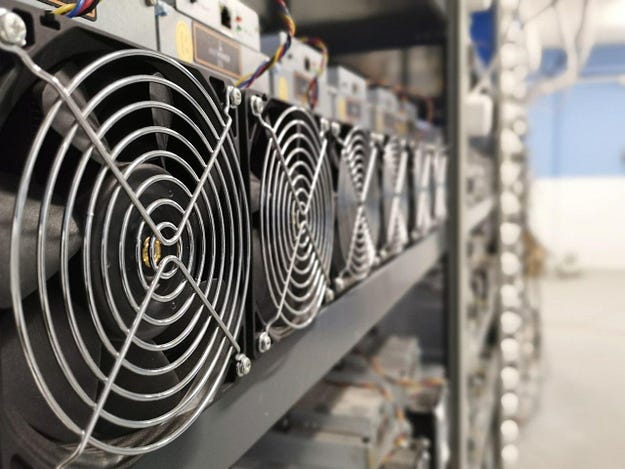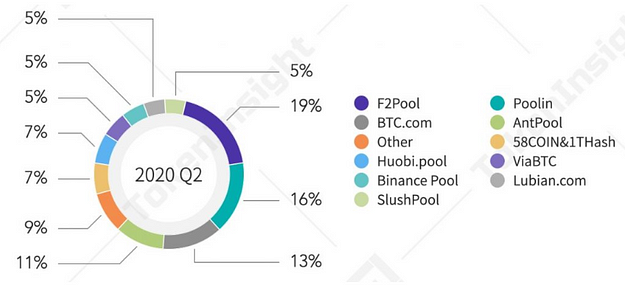Bitcoin Mining & Cryptocurrency Industry Overview
Let's examine what Bitcoin Mining is and what it entails, along with a brief overview of the Cryptocurrency Mining Industry’s key players.
To begin with, Bitcoin or BTC, is a digital currency or cryptocurrency that facilitates exchange or storage of value. It is based on the innovative technology of Blockchain and the use of cryptography.
Some of this digital asset’s features include that it is decentralized, borderless, and has a limited supply. Specifically, only 21 million Bitcoins will ever be mined. So far, around 18.5 million Bitcoins have been mined, meaning that roughly 88% of total Bitcoins are already mined and circulating. The remaining 2.5 million Bitcoins are expected to be mined by 2140.
Source: Exodus
Bitcoin — A new digital asset class
Bitcoin after more than ten years in existence is challenging to change the global financial system and the whole world with it. Many experts discuss that a new asset class is emerging, transforming the industry. BTC is the first digital currency that solved the problem of double-spending, without the need of a middleman (i.e. a bank).Basically, anyone can open a BTC wallet (account), without any paperwork, bureaucracy or any central authority tracking their transactions. This is possible due to the decentralized nature of Bitcoin and its underlying Blockchain technology, resulting in the absence of a central authority (banks, governments, etc). In other words, there is no need for extensive paperwork that may delay the opening of the wallet, as Bitcoin functions without a middleman. Its adoption has tremendously increased throughout the last years, as is evident from the rise in wallets users worldwide reaching more than 50 million in Q2 of 2020 (Source: Statista).
The backbone of the Bitcoin network is mining. As Bitcoin mining, we refer to the procedure that devotes computational power on the Bitcoin network, for running complicated calculations in search of a specific number, in order to verify any transaction happening on the network. Let us examine in more detail what it is, how it works, and a brief overview of the network and market of BTC mining, as well as the key players and vendors of the cryptocurrency mining industry.The backbone of the Bitcoin network is mining.
Bitcoin Mining Explained
Bitcoin mining is done by “specialized” computers, which are called miners. Each model of miner has its own computational power and power consumption. The Hash Rate is the speed at which a miner is completing an operation in the Bitcoin code.
GX Blocks Energy Bitcoin Mining R&D Centre
In simple terms, a hash rate can be defined as the rate at which a given mining machine operates. Crypto mining involves finding blocks through complex computations. The blocks are like mathematical puzzles. The mining machine has to make thousands or even millions of guesses per second to find the right answers to solve the block.
The hash (or target) changes according to changes in difficulty. The chances of getting a given hash are very low. The miner, therefore, has to make numerous tries by varying the nonce (an arbitrary number used once) and hence find the hash. The number of attempts that a miner makes per second is known as the hash rate or hash power. A higher hash rate increases your chances of finding the next block and receiving the reward.
Ultimately, the miner’s role is to unstoppably try to solve computational problems in order to validate the block by retrieving the nonce. Doing so, they achieve three things: verifying transactions, securitizing the network, and issuing new Bitcoins.
In order to have an economic incentive to perform this service and provide computational power, miners are rewarded with the newly created Bitcoins plus transaction fees. It used to be the case that individuals could mine at home. However, as the industry is rapidly evolving, this is no longer feasible, forcing individuals to join mining pools or hire companies offering mining services. The main reasons for this are the high initial costs of hardware and operational costs of electricity, as well as increased hash-rate difficulty, making break-even points unattainable for individuals.
Bitcoin Mining Network Security
The higher the computational power devoted to the network by its members, the more secure it is. That is because the only way to maliciously attack the Bitcoin network is to take over more than 51% of the network’s computational power. In other words, the more players enter the industry and invest, the harder it will be for one single player to take over more than half of the mining industry’s share.Nevertheless, this attack is highly unlikely to happen for the following reason. Participants understand that such an attack would completely impair the network’s and cryptocurrency’s value, which would eventually also affect their own wealth. Therefore, it is in the community’s best interest to support the network.
Hash Rate & Network Difficulty
Source: Blockchain.com
The estimated number of TH/s that the Bitcoin network is performing has been overall increasing in an exponential manner in recent years, reaching a new high in September 2020 at approximately 140m TH/s as the logarithmic graph shows.
Likewise, the relative measure of how difficult it is to mine a new block for the Blockchain is also increasing exponentially, as depicted in the logarithmic graph. It is rapidly increasing since 2018, reaching an all-time high at approximately 19.3t in September 2020 as depicted in the Network Difficulty logarithmic graph.
Source: Blockchain.com
Mining Revenue
As already mentioned, it is nowadays harder for individuals who mine to break-even as initial and operating costs have increased, but still, miners’ revenues are increasing along with Bitcoin’s price. Currently, the total value of coinbase block rewards and transaction fees paid to miners are at roughly 11m for September 2020.Source: Blockchain.com
Cryptocurrency Mining Industry Brief Overview
Key players and vendors of the Bitcoin mining industry are the manufacturers of ASIC Bitcoin miners. The biggest manufacturer is Bitmain, which for many years practically had a monopoly on the market, being responsible for more than 80% of the hardware used on the Bitcoin network. This is challenged in recent years mainly by three companies, MicroBt, Canaan Creative and Zhejiang Ebang Communication. In 2019, Bitmain accounted for 58% of the market, MicroBt for 25%, Canaan Creative for 12,5% and Zhejiang Ebang Communication for 6%. All of them together accounted for more than 95% of the mining hardware market. (Source: TokenInsight)Cryptocurrency Mining Pools

Q2 2020 Hashrate Distribution. (Source: TokenInsight)
Furthermore, as discussed, people have diverted from mining individually, and hence the emergence of large mining pools is being observed in the industry. Some of the largest cryptocurrency mining pools, are F2Pool, Poolin, BTC.com, and AntPool, among others, as depicted.
Concluding, the cryptocurrency mining industry is constantly evolving as new technological advancements are introduced and implemented. Bitcoin mining thus heavily relies on the hash-rate capabilities of miners, network difficulty, electricity costs, and initial expenses in acquiring hardware or joining mining pools. In summary, mining’s purpose is to verify transactions, secure the network, and issue new Bitcoins, by verifying blocks in the blockchain, which makes it the backbone of the Bitcoin network.
Last updated on 25 September 2020.
Copyright © 2020 GX BLOCKS ENERGY S.A.